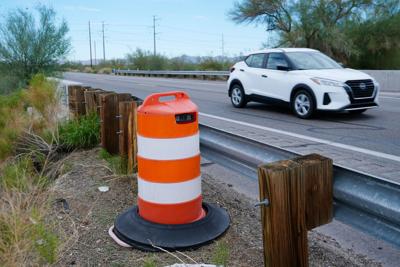Nationwide waiver expands ethanol gasoline sales—except in California, where legislation is still pending.
The U.S. government has issued an emergency waiver permitting the nationwide sale of E15 gasoline—a blend containing 15% ethanol—during the summer driving season. Traditionally restricted during summer months due to environmental concerns over smog formation, E15 is now being greenlit as part of a broader strategy to boost fuel supply, combat high gas prices, and provide relief to consumers during a period of high fuel demand.
The Trump administration’s move aims to expand fuel options and stabilize prices, particularly amid global geopolitical tensions affecting energy markets. Biofuel producers and corn growers are expected to benefit significantly, as E15 opens up a larger domestic market for ethanol, much of which is derived from U.S.-grown corn. “This action, allowing the sale of E15 in the summer, will provide immediate relief for consumers, offer more choices at the pump, and boost demand for corn grown, processed, and used right here in the United States,” stated Brooke Rollins, Secretary of Agriculture.
The Environmental Protection Agency (EPA), which issued the waiver, announced that the rule will take effect on May 1st. The agency indicated that it may extend the waiver beyond the summer if necessary. In the past, similar waivers have been granted, but this move represents one of the broadest emergency measures to allow E15 sales nationwide during summer.
Geoff Cooper, president of the Renewable Fuels Association, praised the administration for its swift action. “With geopolitical conflict shaking energy markets around the world, we applaud President Trump and Administrator (Lee) Zeldin for acting quickly to combat potential fuel shortages and help keep gas prices in check this summer,” Cooper said.
Earlier this year, the EPA also upheld an April 28 deadline for approving a request from governors in several Midwest states—including Illinois, Iowa, and Minnesota—to allow year-round sales of E15. The waiver also temporarily lifts requirements that would have otherwise forced E10 gasoline (which contains 10% ethanol) in several Midwest states to meet more stringent emission standards than gasoline used elsewhere in the country.
E15 in California: A Different Picture
While most states are set to benefit immediately from the emergency waiver, California remains an outlier. As of January 1, 2025, California is the only U.S. state that has not approved the sale of E15 gasoline. The California Air Resources Board (CARB) has been evaluating the safety and environmental impact of E15 since 2018. Although CARB has completed multimedia studies affirming the fuel’s safety, the state has yet to finalize the necessary regulations to authorize its sale.
Legislation currently pending in the California legislature seeks to change that. The bill proposes allowing the use of E15 in the state while regulatory procedures are completed, effectively aligning California with the new federal standards. If passed, this legislation could open the door for E15 sales in California as early as this summer, providing the same cost and supply benefits enjoyed by other states.
If enacted, the legislation would expedite E15’s availability and allow California to take advantage of the federal waiver, potentially reducing fuel prices and alleviating supply shortages during the high-demand summer travel season. However, until state-level regulations are finalized or the pending bill is passed, California drivers will not see E15 at local fuel stations.
Benefits:
- Lower cost: Ethanol is typically cheaper than gasoline, which can reduce overall fuel costs.
- Higher octane: E15 generally offers a higher octane rating than regular gasoline, improving engine performance in compatible vehicles.
- Cleaner combustion: Ethanol burns more cleanly than gasoline, resulting in fewer tailpipe emissions.
Potential Drawbacks:
- Limited vehicle compatibility: E15 is approved for cars, SUVs, and light-duty trucks from model year 2001 and newer. It is not suitable for motorcycles, boats, lawn equipment, or vehicles manufactured before 2001.
- Slightly lower fuel economy: Because ethanol contains less energy than gasoline, E15 may result in a 1–3% decrease in fuel efficiency.
- Warranty concerns: Some manufacturers, especially of older models, may not honor warranties if E15 is used, due to concerns about possible corrosion or wear on fuel system components.
Conclusion
The federal emergency waiver for E15 marks a significant step in expanding renewable fuel usage and addressing seasonal fuel demand. While it brings immediate relief and opportunities to most states, California’s impact will depend on the outcome of pending legislation and regulatory updates. As biofuel advocates push for broader adoption, E15 may become a more common choice at gas stations across the nation—offering economic and environmental benefits, provided it is used in approved vehicles.








